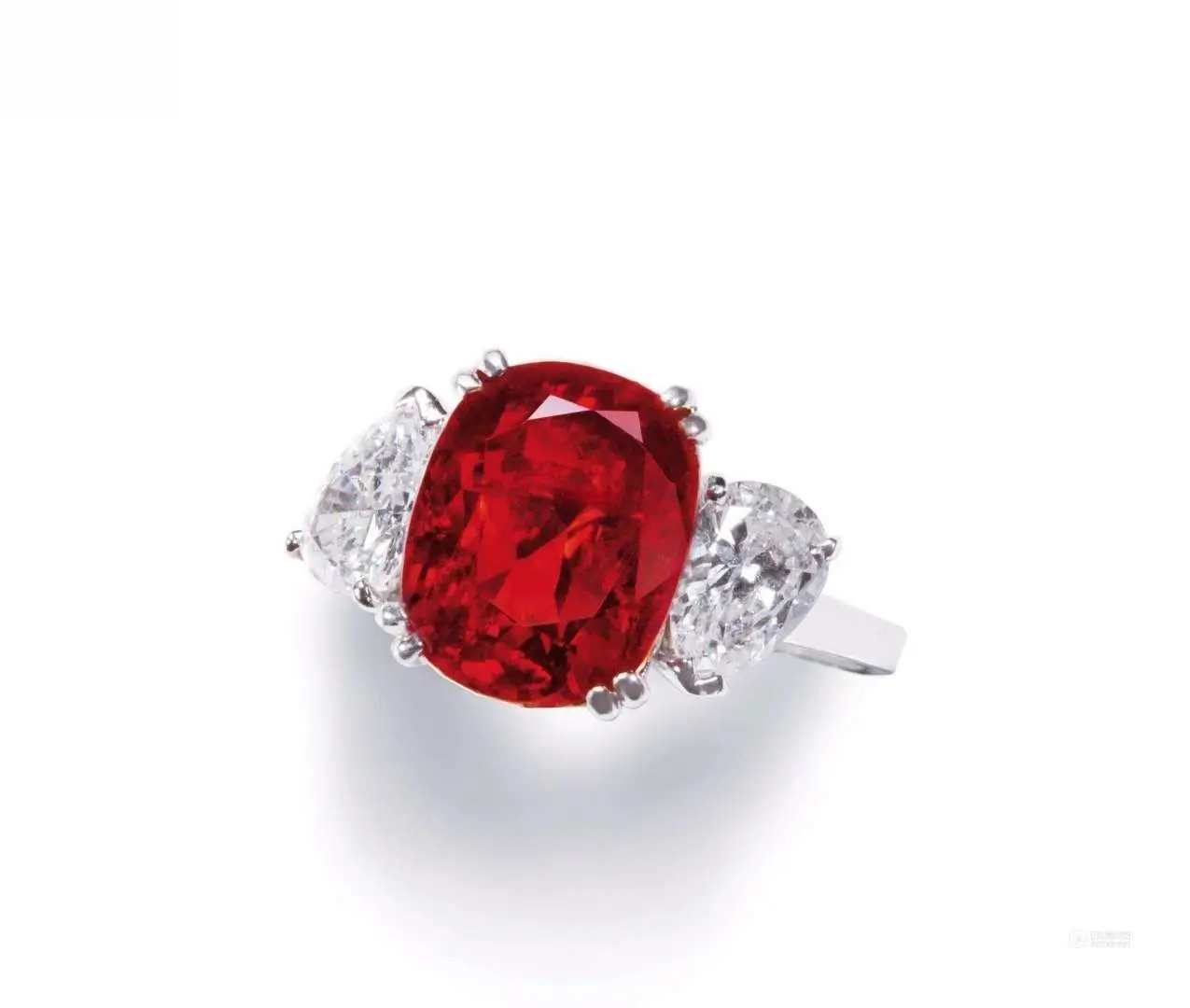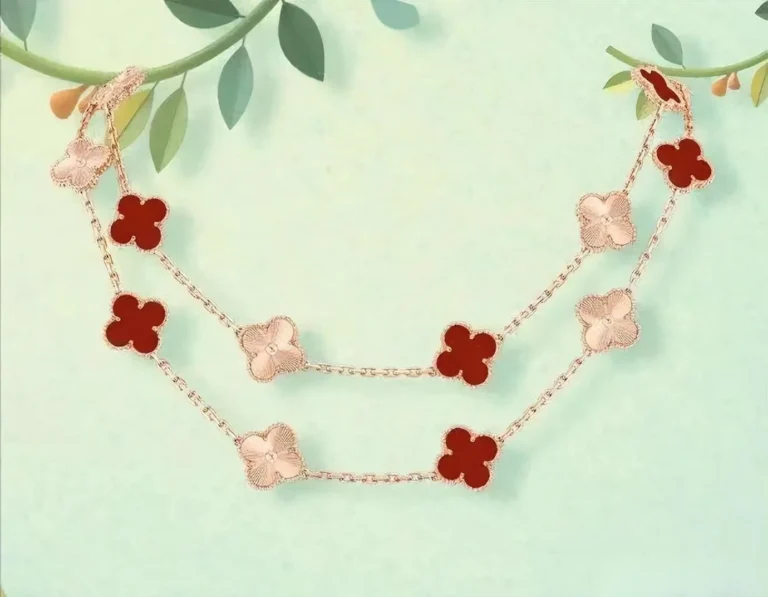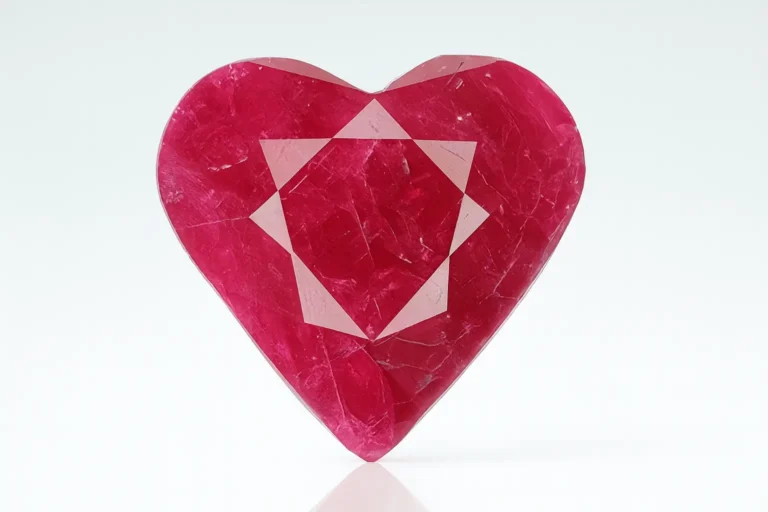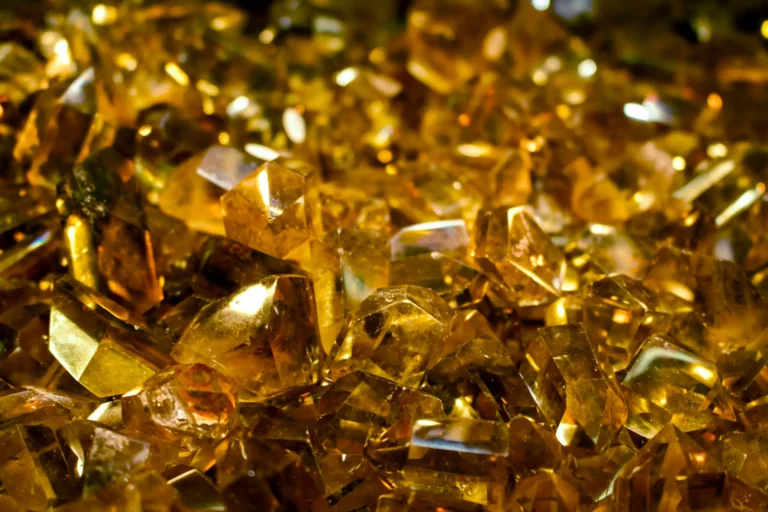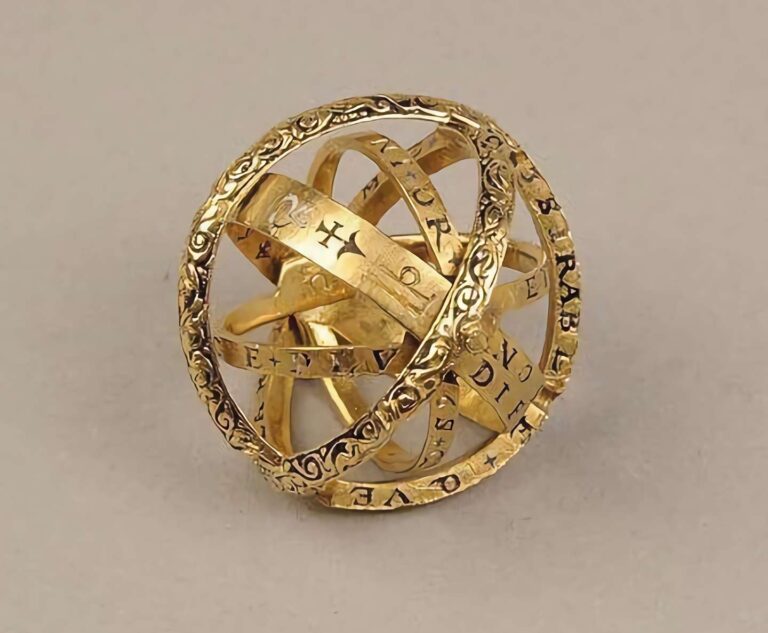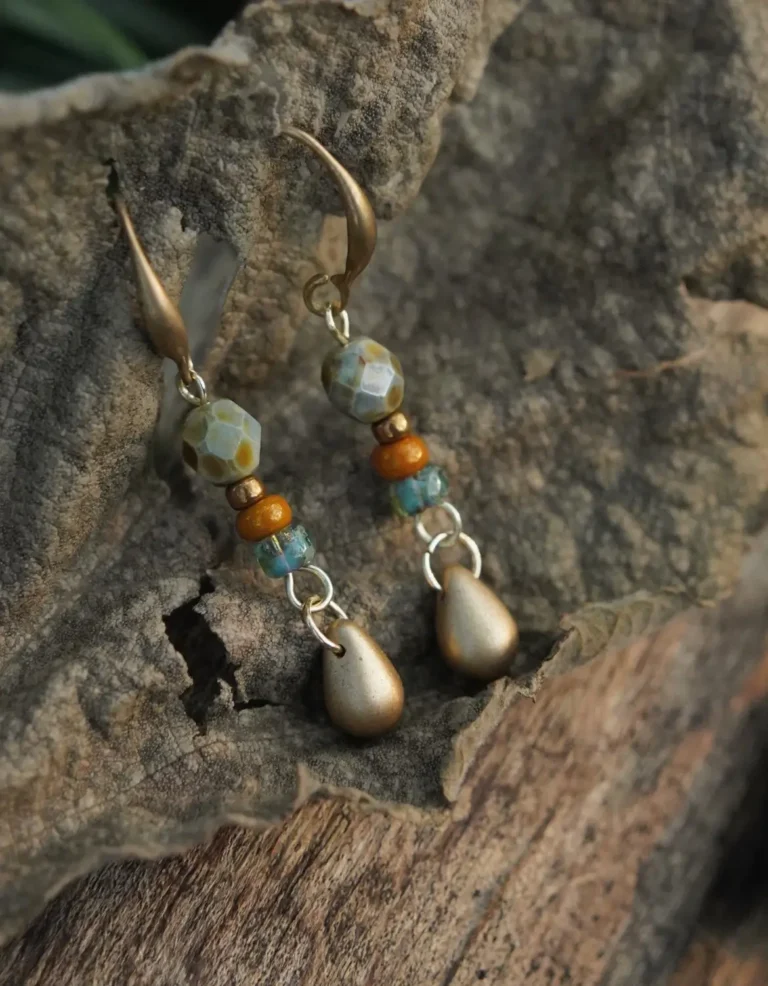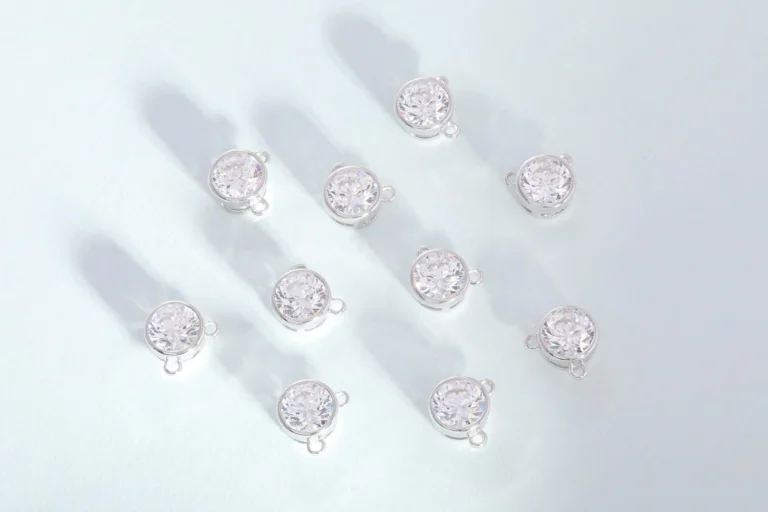Ultimate Ruby Buying Guide – Color, Carat, Clarity & Treatments Explained
Introduction to the Ruby Buying Guide
Ever wondered why some rubies look stunning while others seem dull, even with the same price tag? The truth is, not all rubies are created equal. In this Ruby Buying Guide, you’ll learn how color, clarity, and treatments impact a ruby’s beauty and value — so you can choose your perfect gem with confidence.
📑 Table of Contents
- Color in Ruby Buying Guide – What Makes “Pigeon Blood” Rubies So Special?
- GRS Ruby Color Grading Standards
- What Defines a Certified Pigeon Blood Ruby
- Famous Example: The Sunrise Ruby Ring by Cartier
- Fluorescence in Rubies – Why Some Rubies Glow Brighter
- How Fluorescence Affects Ruby Appearance
- Fluorescence vs. Diamond Fluorescence – Key Differences
- Buying Tip: How to Evaluate Ruby Fluorescence
- Carat Weight in Ruby Buying Guide – Why Size Impacts Rarity
- Typical Market Prices for Unheated Pigeon Blood Rubies (2025)
- Real Auction Records to Understand Ruby Pricing
- Clarity in Ruby Buying Guide – What Inclusions Mean
- How Major Gem Labs Evaluate Ruby Clarity
- How to Evaluate Clarity When Buying a Ruby
- Buyer Tip: When to Worry About Inclusions
- Cut in Ruby Buying Guide – How Faceting Shapes Beauty
- Why Ruby Cutting Differs from Diamonds
- Avoiding Windowing and Maximizing Light Return
- Choosing a Well-Cut Ruby for Maximum Brilliance
- Heat Treatment in Ruby Buying Guide – Understanding “Heated vs. Unheated”
- Why Most Rubies Are Heat-Treated
- Price Differences Between Heated and Unheated Rubies
- Certification and Transparency for Buyers
- Other Ruby Treatments in Ruby Buying Guide
- Fracture Filling, Flux Healing, and Diffusion Treatment
- Buyer Caution: Always Verify with Certification
- Certification in Ruby Buying Guide – How to Verify Authenticity
- Most Trusted Gemological Certificates (GRS, GIA, SSEF, Gübelin)
- Why Certificates Matter for Ruby Buyers
- Investment Tip: Always Request Heat & Origin Disclosure
- Ruby Origin in Ruby Buying Guide – Why Source Matters
- Top Ruby Sources: Myanmar, Mozambique, and Beyond
- How Origin Influences Color and Value
- Choosing Between Burmese and Mozambican Rubies
- Ruby Alternatives in This Buying Guide – Budget-Friendly Red Gemstones
- Spinel: The Historical Ruby Twin
- Rubellite: Vibrant Red Tourmaline Option
- Red Garnet and Synthetic Rubies – Affordable Choices
- Summary – Become a Smarter Ruby Buyer
1.Color in Ruby Buying Guide – What Makes “Pigeon Blood” Rubies So Special?
Many buyers wonder: Is “Pigeon Blood” really the best ruby color?
Yes — but it’s not as simple as it sounds.
GRS Ruby Color Grading Standards
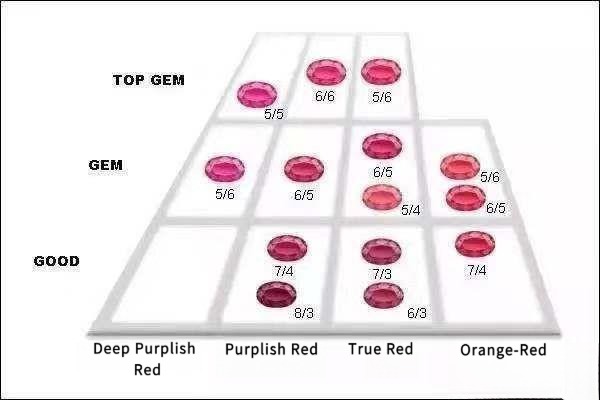
According to GRS (GemResearch Swisslab) color grading standards, ruby hues are classified from highest to lowest as:
Pigeon Blood, Deep Red, Red, Purplish Red, and Pinkish Red.
Additional sentence: To learn more about Pigeon Blood ruby grading, see the Peonyjewels blog article: Materials – Pigeon’s Blood? Royal Red? Understanding Six Major Ruby Grading Systems.
What Defines a Certified Pigeon Blood Ruby
Interestingly, the term “Pigeon Blood” doesn’t actually refer to real blood. It originally described the vivid red eyes of a white dove — a poetic image later adopted by gem experts to define rubies that glow with an intense, fiery inner light.
Historically, the term was reserved only for rubies from Mogok, Myanmar, known for producing stones with pure red tones and strong fluorescence. However, since 2014, GRS has officially recognized Mozambique as another origin eligible to receive the Pigeon Blood Ruby designation, provided the gem exhibits identical color and fluorescence characteristics to those traditionally associated with Burmese rubies, reflecting the country’s exceptional gem quality.
To qualify as a certified Pigeon Blood Ruby, a stone must exhibit:
- A pure, vivid red hue with high saturation
- Medium to strong red fluorescence that enhances its brightness under daylight
- Even color distribution and minimal dark inclusions
These features create the legendary glow collectors adore — that unmistakable, almost “alive” red fire seen in the world’s finest rubies.
Famous Example: The Sunrise Ruby Ring by Cartier
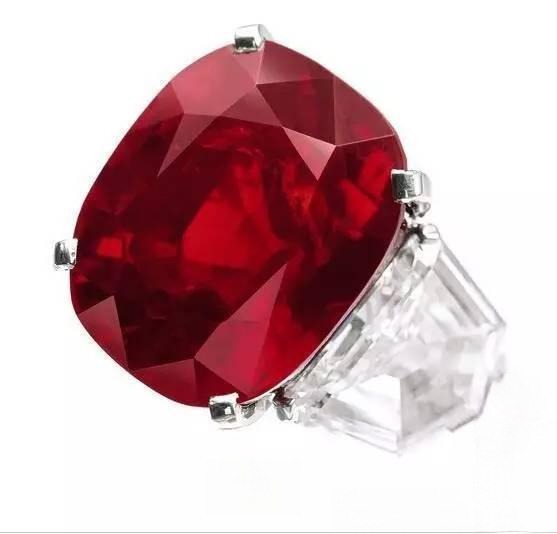
For example, the famous Sunrise Ruby Ring by Cartier, mined in Mogok, weighs 25.59 carats, is unheated, and features a cushion cut. It sold for USD $30.518 million, making it one of the most valuable colored gemstones ever auctioned.
2.Fluorescence in Rubies – Why Some Rubies Glow Brighter
You might recall that strong fluorescence in diamonds can reduce their perceived color and value. So, why is fluorescence considered a positive feature in rubies?
How Fluorescence Affects Ruby Appearance
Fluorescence refers to a gemstone’s ability to emit colored light when exposed to ultraviolet (UV) rays. Since natural sunlight and most indoor lighting contain UV components, a ruby with strong fluorescence often appears more vivid to the naked eye.
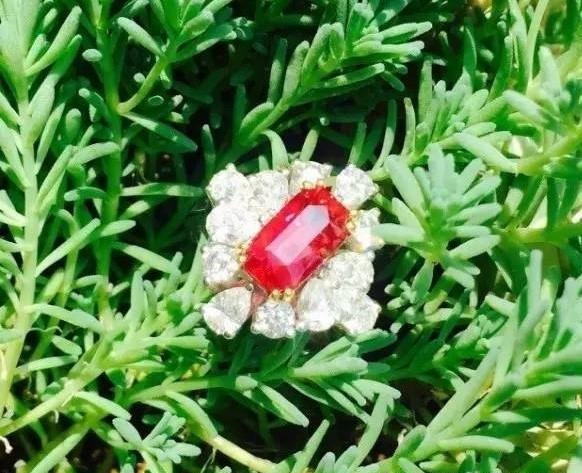
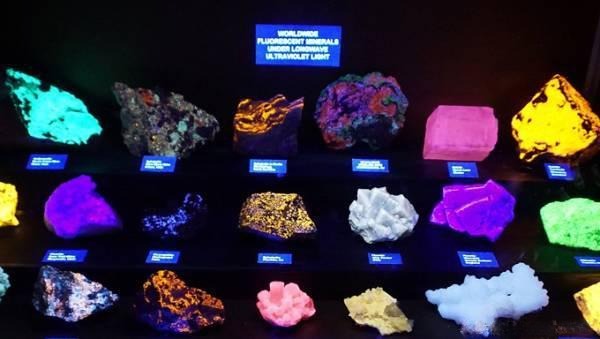
Fluorescence vs. Diamond Fluorescence – Key Differences
In contrast, diamonds with strong blue fluorescence can look slightly milky, diminishing their apparent whiteness. Rubies, however, typically fluoresce red or orange, which intensifies their natural color and enhances their brilliance.However, rubies with higher iron content, such as those from Thailand, tend to show weaker fluorescence.
Buying Tip: How to Evaluate Ruby Fluorescence
This effect makes rubies appear more vibrant under sunlight, adding to their visual appeal and making them particularly desirable among collectors and high-end buyers. When evaluating a ruby, considering fluorescence in addition to color grading (Pigeon Blood, Deep Red, etc.) can help you select a stone that truly stands out in natural light.
3.Carat Weight in Ruby Buying Guide – Why Size Impacts Rarity
Many buyers often ask, “The color looks amazing! Can I get a 5-carat ruby for my birthday?” While the desire is understandable, rubies are extremely rare, especially at larger sizes.
Typical Market Prices for Unheated Pigeon Blood Rubies (2025)
In the high-end ruby market, any ruby over 1 carat is already considered a premium gemstone. Unheated Pigeon Blood rubies above 2 carats are typically classified as collectible-grade.
In 2025, the European and North American markets show the following price ranges for unheated Pigeon Blood rubies, reflecting high-end retail or auction market levels.
- 1-carat: approximately $12,000–$30,000 depending on clarity and origin
- 2-carat: roughly $35,000–$100,000
- 3.5-carat: starting around $55,000 per carat
- 5-carat: starting approximately $320,000 per carat
- 10-carat+: exceeding $1,000,000 per carat
Collectors and investors highly prize unheated Pigeon Blood rubies, particularly from Myanmar, because their vivid color, transparency, and rarity make them scarce and in high demand.
Real Auction Records to Understand Ruby Pricing
For example:
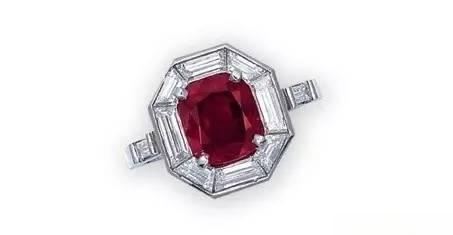
A 2.8-carat Mogok Pigeon Blood ruby ring sold at Christie’s Hong Kong, Nov 2014 for HKD 1.18 million (~USD $150,000), translating to about USD $53,500 per carat.
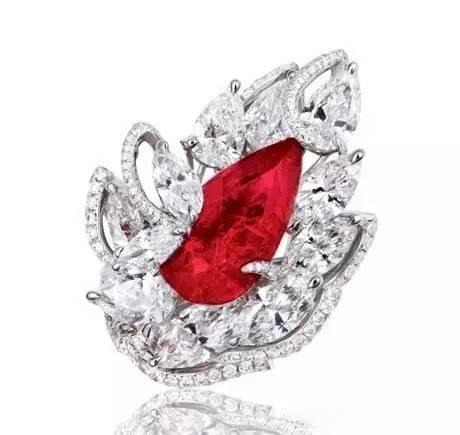
A 5.32-carat natural Mogok Pigeon Blood ruby ring with diamonds sold at Poly Auction, Hong Kong, Oct 2013 for HKD 977,500 (~USD $126,000), or roughly USD $23,700 per carat.
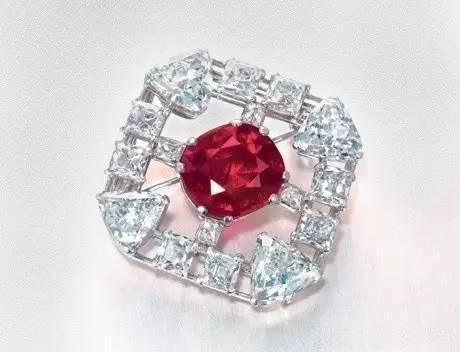
A Cartier 10.1-carat cushion-cut Pigeon Blood ruby brooch auctioned at Christie’s Hong Kong, Nov 2014 reached HKD 65.08 million (~USD $8.4 million), equivalent to about USD $830,000 per carat.
These examples illustrate how exponentially value increases with size, particularly for unheated Pigeon Blood rubies. Larger stones are scarce, and collectors prize them for both their beauty and investment potential.
Note for buyers: When considering larger rubies, pay attention not just to carat, but also to color, clarity, and fluorescence, as these factors can dramatically affect both aesthetics and market value.
4.Clarity in Ruby Buying Guide – What Inclusions Mean
Many buyers assume that a high-priced ruby must also have flawless clarity. In reality, rubies naturally contain inclusions, which is completely normal for this gemstone type. Unlike diamonds, which follow the strict 4C hierarchy, rubies prioritize quality in the order of color > carat weight > clarity > cut.
How Major Gem Labs Evaluate Ruby Clarity
Leading gemological laboratories, including GRS, GIA, and Gübelin, do not assign formal clarity grades to rubies. Unlike diamonds, where clarity is systematically graded (e.g., VVS, VS, SI), colored gemstones such as rubies are assessed more holistically. GIA may describe clarity characteristics in general terms — for example, classifying ruby as a Type II gemstone, meaning it typically contains some inclusions , but no numerical or letter-based grades are applied.
How to Evaluate Clarity When Buying a Ruby
When selecting a ruby, focus on stones with minimal visible cracks or inclusions, and especially avoid those with fractures reaching the surface, as these can compromise both durability and overall appearance.
Moreover, inclusions are not just flaws; they often serve as identification markers for the ruby’s origin. For example:
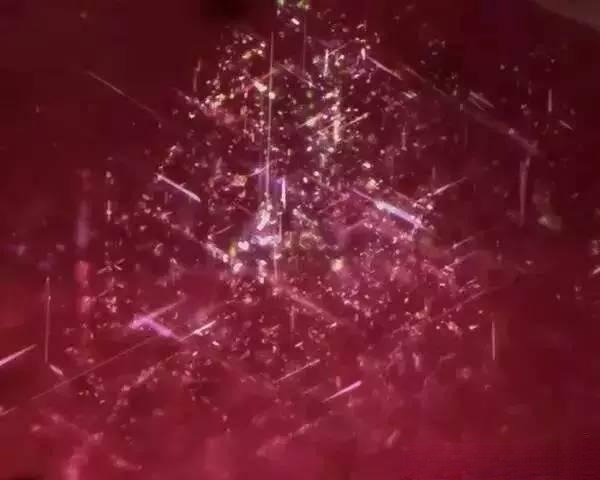
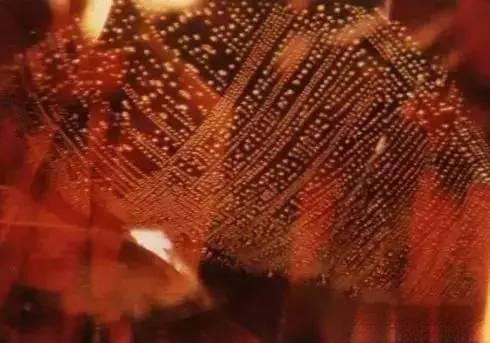
- Mogok, Myanmar rubies commonly feature rutile silk inclusions, giving stones a velvety texture.
- Sri Lanka rubies often show fluid inclusions, reflecting the geological conditions of the deposit.
Buyer Tip: When to Worry About Inclusions
For buyers in the Western market, understanding that clarity is less critical than color and carat can prevent overpaying for a ruby that looks flawless but lacks the sought-after hue or fluorescence. By focusing on inclusions that do not compromise structural integrity or aesthetic appeal, collectors can make informed purchases without unnecessary concern over perfection.
This approach ensures you evaluate rubies like a knowledgeable collector, emphasizing color, weight, and origin, while appreciating the unique inclusions that make each ruby one-of-a-kind.
5.Cut in Ruby Buying Guide – How Faceting Shapes Beauty
Some buyers may wonder why we discuss cut last: does that mean it’s not important? Not at all. While color is the most critical factor for rubies, the cut still significantly affects how the gemstone looks and sparkles.
Why Ruby Cutting Differs from Diamonds
Rubies naturally form in irregular shapes, unlike diamonds. Their deep and saturated body color makes achieving a “perfect” cut challenging. Therefore, faceting a ruby requires balancing the gem’s size, shape, and color to maximize its visual appeal.
Avoiding Windowing and Maximizing Light Return
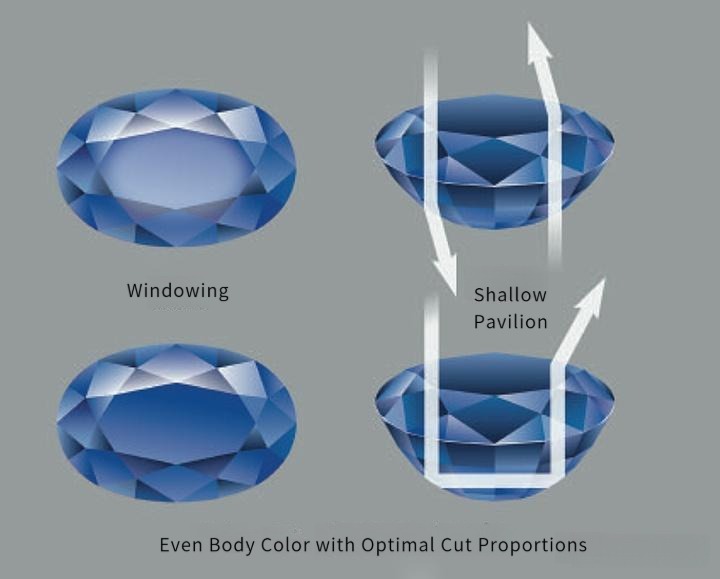
In rubies with high saturation or slightly dark tones, a slightly thinner cut can make the table appear larger, enhancing the stone’s visual presence. However, the cut should never be so thin that it causes windowing.
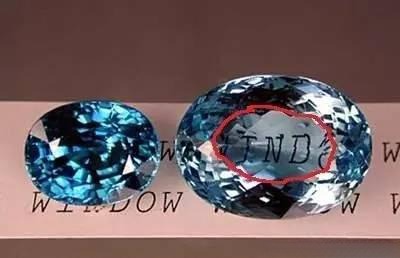
Windowing, also called “leakage,” happens when light passes through certain areas of the ruby, making them appear less saturated than the overall body color. In English gemology, this is referred to as a “window.” A ruby with severe windowing may look like glass rather than a vibrant gemstone.To learn more about gemstone windowing, visit the Peonyjewels blog article: What Is Windowing in Gemstones and How Can You Avoid It?
A well-cut ruby reflects light back to the viewer’s eye through its facets, creating sparkle and depth—this is sometimes called “return of light.” Areas where light escapes instead of returning contribute to windowing, reducing the stone’s perceived beauty.
Choosing a Well-Cut Ruby – Ruby Buying Guide
Even though color outweighs cut in value, a well-faceted ruby maximizes brilliance, fire, and overall elegance. For collectors and buyers, understanding cut ensures that your ruby not only has the desired color and carat weight but also achieves optimal visual impact.
Illustration: The left ruby shows proper light return, while the right ruby’s circled area demonstrates windowing, where color appears washed out.
6.Heat Treatment in Ruby Buying Guide – Understanding “Heated vs. Unheated”
Many buyers ask: “You keep mentioning heated and unheated rubies—can rubies really be ‘burned’?”
In gemology, the term “burned” is a colloquial way of referring to heat treatment. This process is similar to cosmetic enhancement—it improves the ruby’s appearance by intensifying color and clarity. Importantly, heat-treated rubies remain 100% natural; the treatment does not alter the stone’s chemical composition.
Why Most Rubies Are Heat-Treated
Currently, Over 90% of rubies on the market, including red and blue sapphires, undergo some form of heat treatment. Heat is considered a physically stable and widely accepted enhancement, ensuring that the color remains durable and permanent for everyday wear.
Price Differences Between Heated and Unheated Rubies
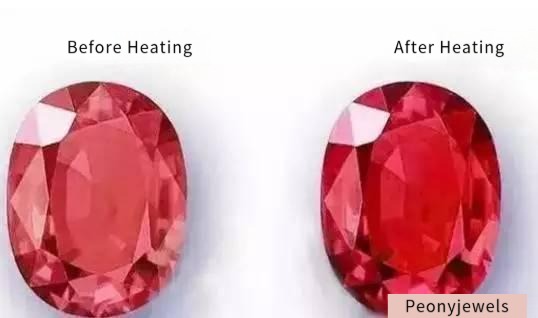
While a heat-treated ruby often commands a higher price than the same stone before treatment, unheated rubies are far more valuable due to their rarity. For example, two rubies of similar size, color, and clarity—one unheated and one heated—will show a substantial price gap. Unheated rubies are highly sought after by collectors and investors because scarcity drives long-term appreciation.
Certification and Transparency for Buyers
If your goal is daily wear, a heat-treated ruby is generally more affordable and visually vibrant, making it an excellent choice for personal enjoyment. However, if you are considering long-term investment or collecting, unheated rubies are preferred, offering better potential for value growth over time.
Always request reputable gemological certificates (such as GRS, GIA, SSEF, or Gübelin) that indicate whether the ruby is heated or unheated. Transparency ensures you understand exactly what you are purchasing and protects your investment.
7.Other Ruby Treatments in Ruby Buying Guide
Many buyers wonder: “Besides heat treatment, are there other ways rubies’ quality can be altered?”
Fracture Filling, Flux Healing, and Diffusion Treatment
Yes, there are. Some rubies with numerous fractures undergo filling treatments, where jewelers inject colorless or colored substances such as resin, oil, or glass to strengthen the stone and conceal cracks. This process can improve the ruby’s appearance and durability, but it is considered a significant enhancement rather than a natural state.
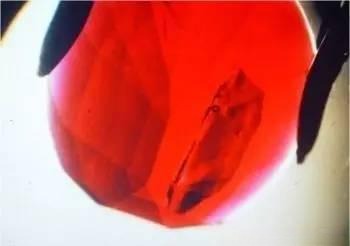
For rubies with pale or uneven color, gem labs or jewelers may use chemical diffusion treatments. This method introduces elements into the crystal lattice to intensify or adjust the color, making the ruby visually more vibrant.
Buyer Caution: Always Verify with Certification
Important considerations for buyers:
- Filled or chemically altered rubies are not classified as natural, and their market value is substantially lower than that of unaltered rubies.
- These enhancements may be difficult to detect with the naked eye, so obtaining reputable certification (e.g., GRS, GIA, SSEF, or Gübelin) is crucial. Certificates can indicate whether the ruby has been filled or color-enhanced, helping buyers make informed decisions.
- From a collector’s perspective, untreated rubies always command a premium, especially in larger sizes or rare colors like Pigeon Blood.
By understanding the types of treatments, buyers can avoid overpaying for enhanced rubies and select stones that meet their aesthetic preferences and investment goals.
8.Certification in Ruby Buying Guide – How to Verify Authenticity
Many buyers worry: “There are so many hidden pitfalls… Can I detect treatments with the naked eye? How can I avoid overpaying for enhanced rubies?”
Most Trusted Gemological Certificates (GRS, GIA, SSEF, Gübelin)
In reality, detecting heat treatment or other enhancements with the naked eye is extremely difficult. This is where trusted gemological certificates become essential. Reliable certificates for rubies include Gübelin (Gubelin), SSEF, AGL, GIA, and GRS.
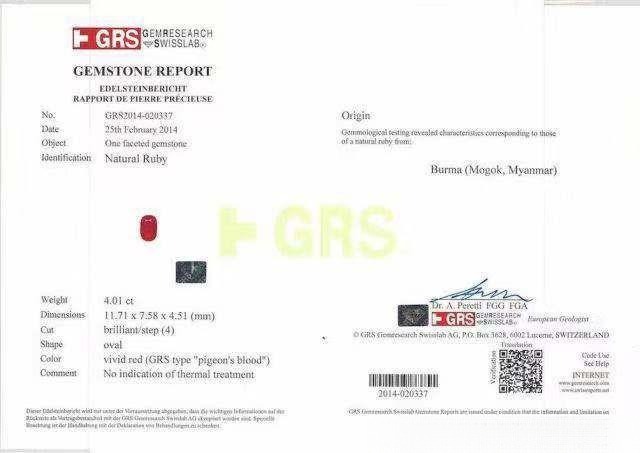
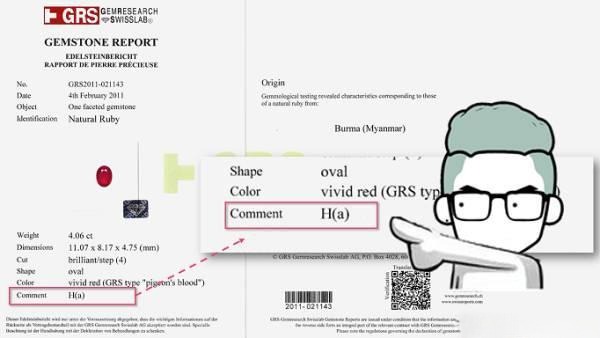
It’s important to note: heat treatment is generally considered natural under many national standards. Consequently, some domestic certificates may not indicate whether a ruby has been heated, nor do they always list the ruby’s origin.
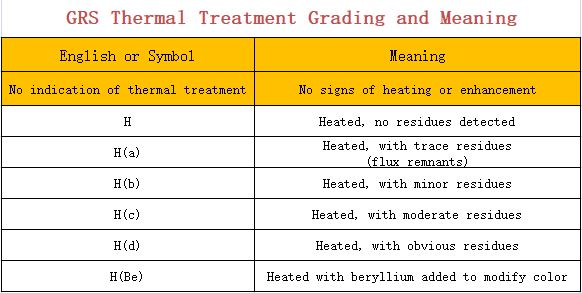
Why Certificates Matter for Ruby Buyers
For high-value purchases, especially for collectible-grade rubies, obtaining a GRS certificate is highly recommended. Although these certificates can cost $100–$300 per stone and take longer to process, they provide critical verification for expensive gems.
For auction-quality rubies, a Gübelin certificate is often considered the gold standard. This historic institution maintains strict grading criteria, ensuring that certificates carry substantial credibility and enhance buyer confidence.
Investment Tip: Always Request Heat & Origin Disclosure
Key points for buyers:
- Always request a reputable certificate when purchasing rubies of significant value.
- Check whether the certificate notes heat treatment, filling, or other enhancements, as this affects both market value and resale potential.
- Certificates not only verify authenticity but also provide peace of mind, helping buyers make informed decisions in a complex market.
9.Ruby Origin in Ruby Buying Guide – Why Source Matters
Many buyers ask: “Do certificates need to state the origin? How important is the ruby’s source?”
Top Ruby Sources: Myanmar, Mozambique, and Beyond
While a ruby’s origin doesn’t define its quality outright, it heavily influences market value and collector interest. The world’s main ruby-producing countries include Myanmar, Mozambique, Thailand, Sri Lanka, Vietnam, Tanzania, and Kenya. In China, Yunnan and Qinghai also produce small quantities of rubies.
Among these, Myanmar (Burma) stands out as the source of the finest rubies, particularly Pigeon Blood rubies. These stones often exhibit strong fluorescence and a velvety texture, characteristics rarely found in rubies from other regions. Most Burmese rubies are mined through small-scale operations, often under limited and closely regulated export conditions, which keeps production limited and maintains high market demand.
How Origin Influences Color and Value
Mozambique has emerged over the last decade as a major ruby source. Its rubies are consistently high in quality and generally more affordable than Burmese stones, making them a more accessible option for collectors and enthusiasts. Despite being less expensive, the Mozambique ruby market has steadily appreciated, reflecting growing global demand.
Choosing Between Burmese and Mozambican Rubies
For buyers in the Western market:
- Consider both Myanmar and Mozambique rubies depending on budget and collection goals.
- Burmese rubies remain the most prestigious and valuable, especially for investment-grade stones.
- Mozambican rubies offer excellent value and quality, suitable for fine jewelry and emerging collectors.
Visual references:
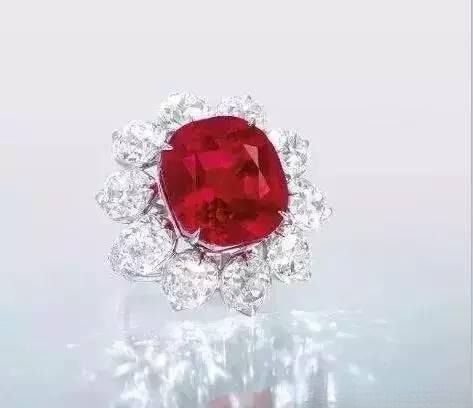
Burmese ruby ring example
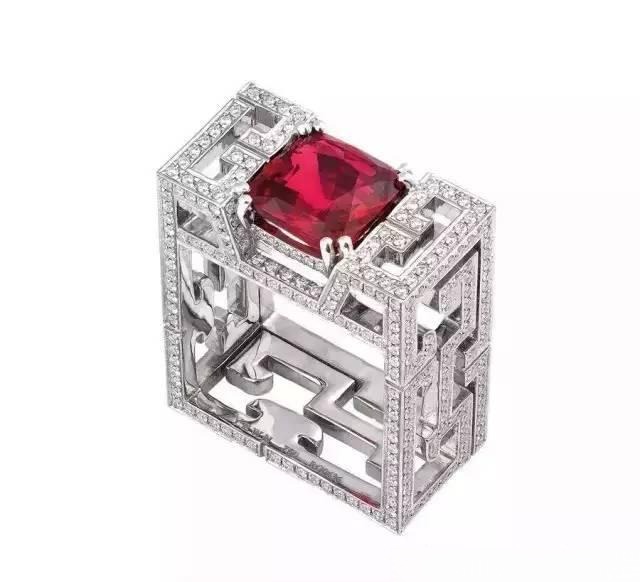
4-carat Mozambique ruby ring by Dickson Yewn
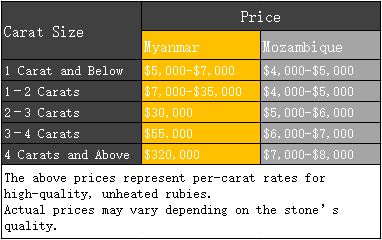
Price comparison between Burmese and Mozambique rubies
Key takeaway: Understanding a ruby’s origin helps buyers make informed decisions, balancing price, aesthetics, and long-term value, which is critical in a sophisticated market.
10.Ruby Alternatives in This Buying Guide – Budget-Friendly Red Gemstones
Many buyers wonder: “Rubies are too expensive… Are there other red gemstones that can give me a similar fiery look without breaking the bank?”
Fortunately, several popular ruby alternatives exist that combine beautiful red tones with more accessible prices.
Spinel: The Historical Ruby Twin
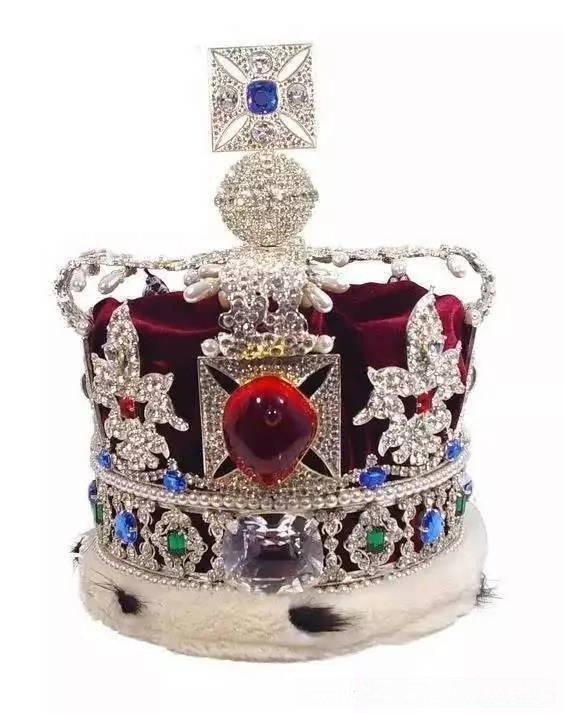
Historically, people mistook red spinels for rubies because of their striking color.The famous Black Prince’s Ruby in the British Crown, weighing around 170 carats, is actually a spinel. Since 2010, spinel prices have risen as the gem gained recognition, but it still remains far more affordable than rubies. Small Burmese red spinels around 1–2 carats typically cost $35–$250 per carat, depending on quality. Spinel is an excellent choice for buyers seeking authentic red sparkle on a budget.
Rubellite: Vibrant Red Tourmaline Option
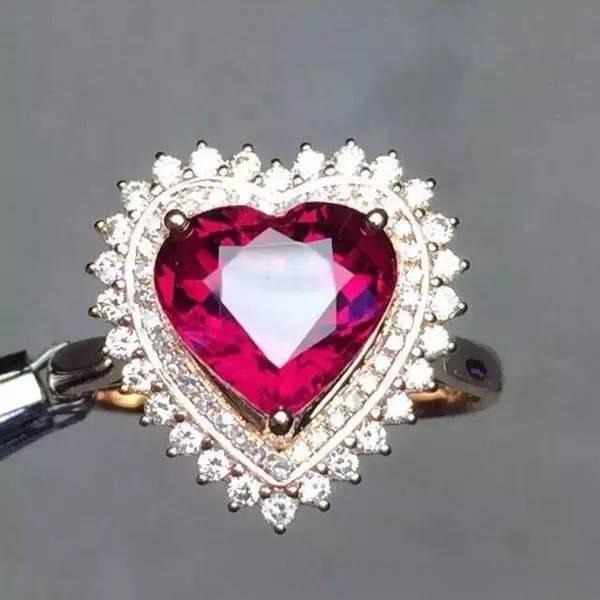
Rubellite, a type of red tourmaline, is widely sought after for its vivid red color. Its crystals are relatively large, with a Mohs hardness of 7–8 and medium-to-strong pleochroism, meaning the stone shows different shades of red from various angles. Clarity is generally moderate, with some tubular or fluid inclusions. Prices vary significantly based on color and clarity, with 1–4 carat stones ranging roughly from $30–$220 per carat. Rubellite offers eye-catching red tones at a fraction of the ruby price.
Red Garnet and Synthetic Rubies – Affordable Choices
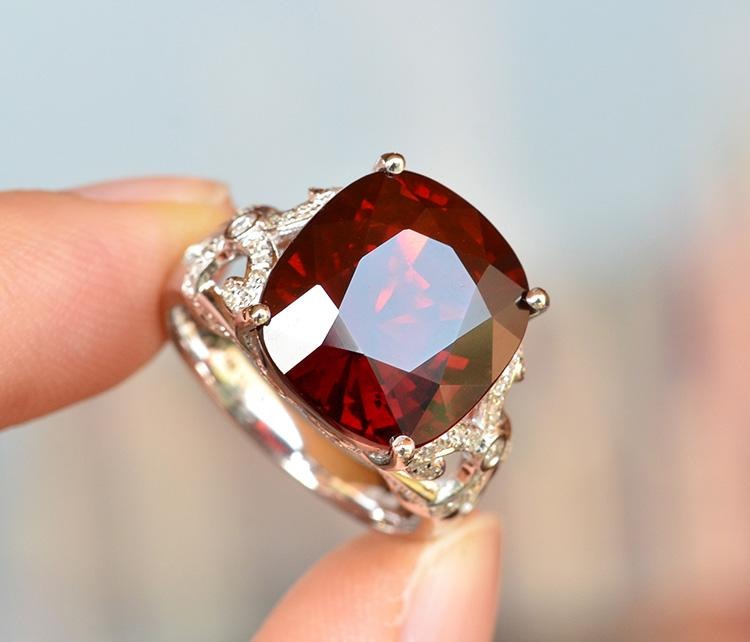
Jewelers often use red garnets as ruby substitutes because of their deep red hues and good clarity.They remain an affordable option for casual jewelry. However, garnets often carry brownish or darker undertones, and large, pure red garnets are relatively rare. Buyers should focus on stones with consistent color and minimal inclusions for the best visual impact.
Additional sentence: To learn more about garnet buying tips, visit the Peonyjewels blog article: The Ultimate Guide to the Garnet Family – Types, Colors, and Buying Tips.
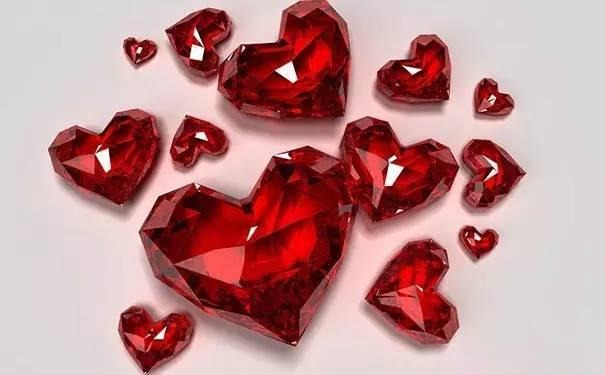
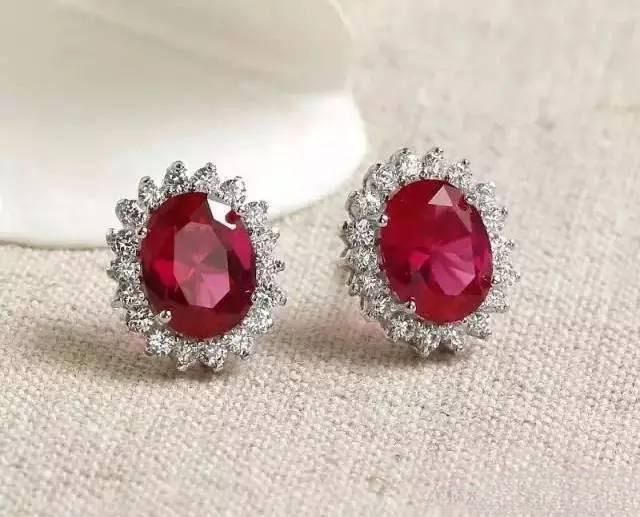
Modern technology produces synthetic rubies that closely mimic natural rubies in density, hardness, and color. From the eye, synthetic rubies appear flawless, with uniform color and few inclusions, although they can lack the natural character of mined stones. Prices are dramatically lower—often 1/100 to 1/10 the cost of natural rubies of similar size and quality. Always request a reputable certificate when buying synthetic rubies to avoid paying premium prices for lab-made stones.
Key Takeaways for Buyers
- Spinel and rubellite offer beautiful red tones at accessible prices.
- Garnets provide deep red hues for casual or fashion jewelry.
- Synthetic rubies deliver the closest visual match to natural rubies but require certification.
By understanding these alternatives, buyers can enjoy the vivid red aesthetic of rubies while making informed choices that suit their budget, jewelry goals, and long-term value considerations.
Summary – Become a Smarter Ruby Buyer
See more, learn more, and don’t buy on impulse. Online tips can help, but misinformation is everywhere—reading a few articles won’t make you an expert.
This guide highlights ten key points that take you beyond a beginner’s understanding. True mastery comes from hands-on experience: visiting jewelry stores, museums, and gem markets allows you to appreciate a ruby’s quality firsthand.
By observing high-quality stones and learning from trusted sources, you’ll avoid poor-quality or overpriced gems. Exploring PeonyJewels’ handmade vintage earrings also offers insight into craftsmanship and attention to detail.
In short: experience, observation, and careful selection are your best tools for becoming a confident collector.

